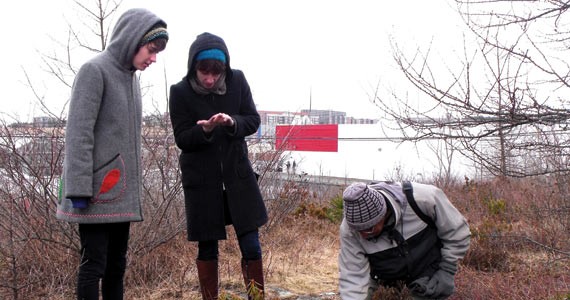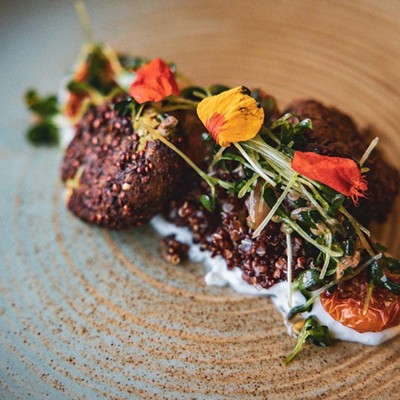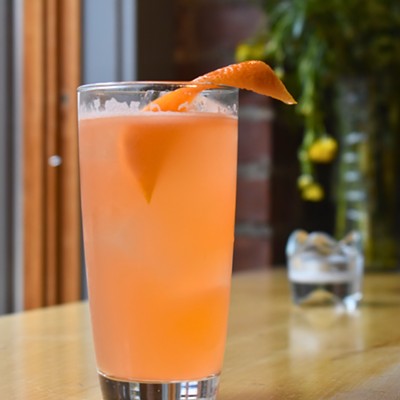We can hear the sounds of traffic whizzing down the 102, as we clamber up the rocks behind the Bayers Lake IMAX to a grassy bank of earth. The snow has thawed, revealing shredded plastic bags clinging to the bare branches of trees, old decomposing department store flyers and scads of wild blueberry bushes. Decked out in rubber boots and armed armed with guidebooks about Nova Scotia's flora and fauna, we disturb a few teenagers looking to spark a joint as we trek into a berry forager's paradise.
Leading the way with a brisk pace is Akhtar Abassi, a retiree who's a wild edibles enthusiast and active member of the Ecology Action Centre's Food Action Committee. After wandering with Abassi through our city's berry-rich streets, parking lots, fields and forests, I vow never to be a sucker for expensive imported berries again. Here's a sampling of some of the berries you can find all over HRM:
Wintergreen: Found growing in woody areas of the city, wintergreen berries taste extra sweet right now, after being preserved by snow and frost. Nibbling the leaves and berries is a refreshing, minty substitute for chewing gum for Halifax hikers.
Shadbush: Abassi shows us a patch of shadbush, soon to flower, down by Halifax's Acadian Lines bus station. The berries pop up in July along the roadside and at busy intersections. Try the sweet almond-like berries on their own or cooked in porridge or bannock (campfire bread).
Elderberry: Abassi brings us his elderberry syrup, made with frozen elderberries he collected last year, star anise, fennel and cardamon. Red elderberries are toxic, whereas the black berries are edible. If you spot an elderberry shrub before its berries are ripe and want to know whether or not its fruit will be edible in the late summer, try snapping a twig (without harming the shrub)---black elderberries have white tissue at the centre of the twig, while the toxic red have brown tissue. Home brewers can make delicious elderberry wine.
Huckleberries: If you venture into the woods behind Kent Building supplies, you'll spot the red buds of huckleberry plants. The gritty, sweet berries that pop up in late summer are delicious in pies, crisps and jams. Find some jam-making tips over at adventuresinlocalfood.wordpress.com.
Chokecherries: Abassi points out some chokecherry trees clinging to a wire fence in a parking lot near the Joseph Howe Bulk Barn. In late summer and early fall, these tart wild cherries are delicious on their own, in jellies or when used to flavour meats. Homemade chokecherry jelly and fresh mint are a tasty addition to pork chops from Getaway Farm (getawayfarm.ca), available at the Halifax Seaport Farmers' Market.
Juniper Berries: Find juniper berries in the late summer on Polly Cove Trail and on windy coastal fields. The small, bittersweet berries can be used to boost the flavour of your gin or to season gamey meats. Try pairing juniper with wild boar from Windsor's Martock Glen, where legs are $10.99 a pound (call 798-4734).
Rosehips: You'll find both native and introduced roses growing all over the city. The Rosa rugosa, originally from eastern Asia, sprouts up all over Dunbrack Street and the Clayton Park area. In the late summer and fall, gather rosehips to make floral-tasting jellies or spruce up your vodka with a fragrant rosehip syrup.
The usual suspects: You'll find plenty of the more familiar berries, such as raspberries, blackberries, blueberries, cranberries and strawberries growing all over HRM's woodlands, parks, railroad tracks, lakeshore and coasts. Grab a guide book (such as Heather MacLeod's Edible Wild Plants of Nova Scotia) and a pail, and they'll be yours for the picking as things warm up.












